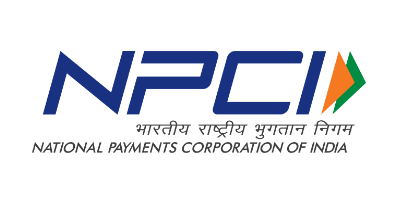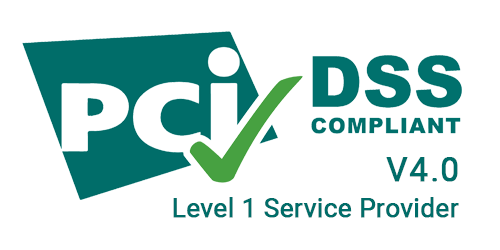Furthermore, electronic payment systems have revolutionized financial management, expediting transactions, enhancing efficiency, and extending accessibility to anyone with a bank account. By eliminating the dependence on physical currency, these systems have significantly curtailed transaction costs, eradicated paperwork, and even reduced operational costs for businesses.
For entities involved in e-commerce, possessing an electronic payment system is not merely advantageous but imperative. It facilitates businesses in receiving payments in their online stores and caters to consumers who prefer the ease of online shopping.
Diverse Types of Electronic Payment Systems
Electronic payments manifest in various forms, each tailored to meet diverse needs and preferences. Let’s delve into some of the most prevalent types:
1. Card Payments: Credit and Debit Cards
Credit and debit cards have become ubiquitous in daily life, enabling seamless purchases by a mere swipe at the point of sale.
2. Electronic Fund Transfers
National Electronic Funds Transfer (NEFT) and Real-Time Gross Settlement (RTGS) provide a swift and secure means to transfer money between bank accounts.
3. Online Bank Transfers
This method empowers individuals to transfer funds directly from their bank accounts to another party’s account, often employed for bill payments and peer-to-peer transactions.
4. Virtual Payment Cards
These are digital counterparts of physical credit or debit cards, facilitating online purchases without exposing actual card details, thereby enhancing security and mitigating fraud risks.
5. Digital Wallets
Services like PayPal, Apple Pay, and Google Pay have gained popularity for their convenience, allowing users to link their bank accounts or credit cards and make payments with a simple tap or click on their smartphones.
Operational Mechanism of Electronic Payment Systems
Electronic payment systems are sophisticated platforms that facilitate the seamless transfer of funds between parties, typically initiated from one bank account to another. The operational process involves several key steps:
Entering Payment Information: Users input their payment details into the system when initiating a purchase or transfer.
Payment Gateway: The payment information is then transmitted to a payment gateway, acting as a conduit between the user, the merchant, and the financial institution.
Validation and Security: The system rigorously validates the payment information for accuracy and legitimacy, employing robust security protocols and encryption techniques.
Transaction Processing: Upon approval, the transaction is processed, and funds are transferred from the user’s account to the merchant’s or recipient’s account.
Electronic payments can be broadly classified into one-time payments and recurring payments, each serving distinct purposes in facilitating transactions.
Classification of Electronic Payments
1. One-Time Payments
These refer to individual, isolated transactions where a customer makes a single payment for a specific product, service, or purchase.
Process for One-Time Payments:
- The customer selects the desired product or service, proceeding to the checkout or payment page.
- The electronic payment system securely collects and authorizes the payment details.
- The specified amount is deducted from the customer’s account and transferred to the vendor or service provider’s account.
- A confirmation of the successful transaction is sent to both the customer and the vendor.
2. Recurring Payments
These involve regular, repetitive transactions where a customer authorizes a vendor or service provider to deduct a specified amount from their account at predefined intervals.
Process for Recurring Payments:
- The customer establishes a recurring payment schedule, specifying frequency and amount.
- The electronic payment system automates the process, deducting the predetermined amount at agreed intervals.
- Funds are transferred to the vendor or service provider’s account, and transaction details are provided to both parties.
Recurring payments offer convenience for both customers and service providers, ensuring timely payments and a seamless continuation of services or subscriptions.
Advantages of Electronic Payment Systems
Electronic payment systems offer a myriad of advantages that have reshaped the landscape of financial transactions:
Faster and More Accurate Payments: In contrast to traditional methods like cheques, electronic payments are swift, reducing the risk of delays or errors.
Reduced Costs: By eliminating physical cheques and cash handling, electronic payment systems significantly slash transaction costs for individuals and businesses.
Increased Security: Robust encryption and authentication measures safeguard sensitive financial data, reducing the risk of fraud and unauthorized transactions.
Convenience: Electronic payments offer unparalleled ease and accessibility for online shopping, bill payments, and various transactions.
Accessibility: Available 24/7, electronic payment systems enable transactions at any time, from anywhere with an internet connection, eliminating geographical barriers.
In Conclusion
Electronic payment systems have revolutionized financial management by offering speed, security, and convenience that traditional methods cannot match. As technology continues to advance, further innovations in the realm of electronic payments are anticipated.
Key Takeaways:
- Electronic payment systems enable cashless transactions, saving time and reducing costs.
- Different types of electronic payments cater to various needs, from card payments to digital wallets.
- The process involves entering payment information, validation, security, and transaction processing.
- Advantages include faster payments, reduced costs, increased security, convenience, and accessibility.
The ascendancy of electronic payment systems has significantly impacted the banking sector, compelling banks to adapt and invest in technology. Mobile banking apps, online account management, and instant fund transfers are now standard offerings, all made feasible by electronic payment systems. This evolution grants customers greater control over their finances, facilitating transactions with unprecedented ease.
With the continuous evolution of technology, one can anticipate more convenient and secure payment options, ultimately shaping the way we engage with our finances for years to come.
Frequently Asked Questions (FAQs)
1. What are the basic characteristics of an electronic payment system?
Electronic payment systems are characterized by their ability to facilitate cashless transactions, reliance on digital technology, accessibility 24/7, and the provision of digital transaction records for financial tracking.
2. Are electronic payment systems secure?
Yes, electronic payment systems prioritize security through encryption, authentication measures, compliance with industry standards, and regular security updates. Users should also take precautions like using strong passwords to enhance safety.
3. How do I choose the right electronic payment system for my business?
To select the right electronic payment system for your business, consider factors like transaction volume, payment types, fees, compatibility with existing systems, and the availability of robust security features and customer support. Tailor your choice to meet your business’s specific needs effectively.
4. Can electronic payment systems be used for international transactions?
Yes, electronic payment systems are commonly used for international transactions. Ensure your chosen system supports international payments, complies with relevant regulations, and offers competitive exchange rates. Be mindful of any additional fees associated with cross-border transactions.









